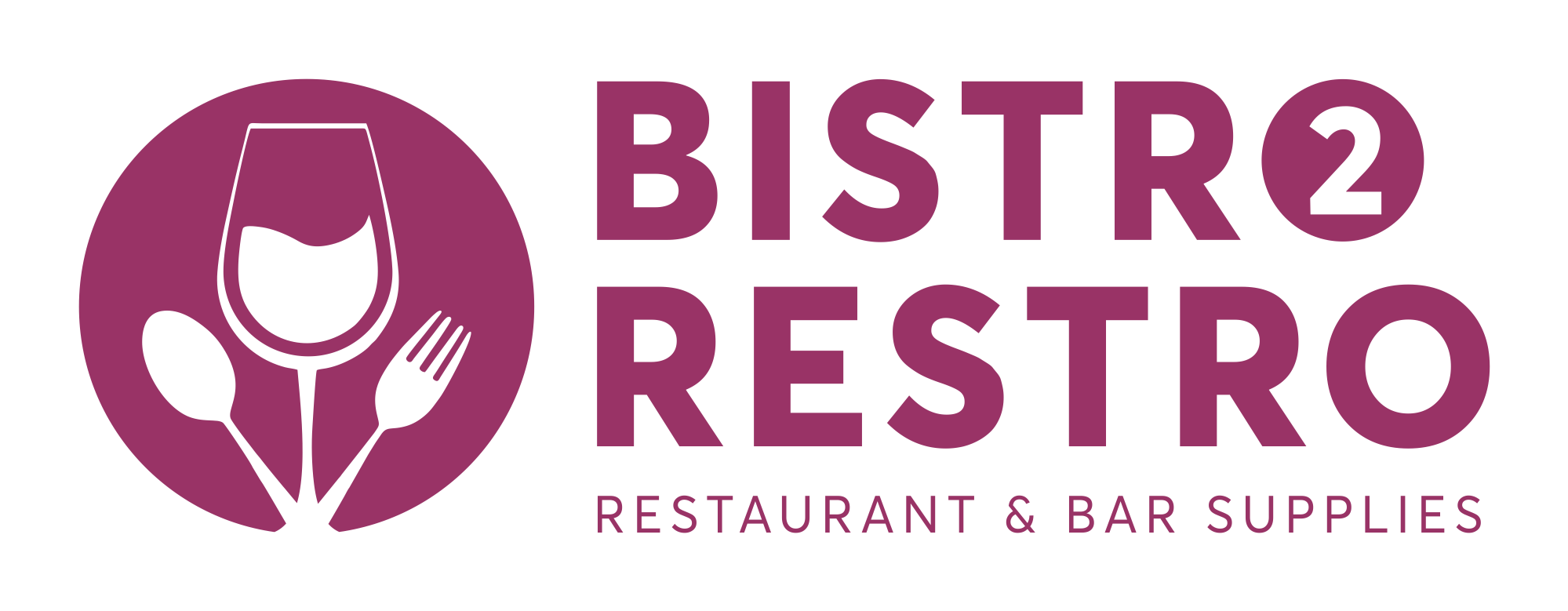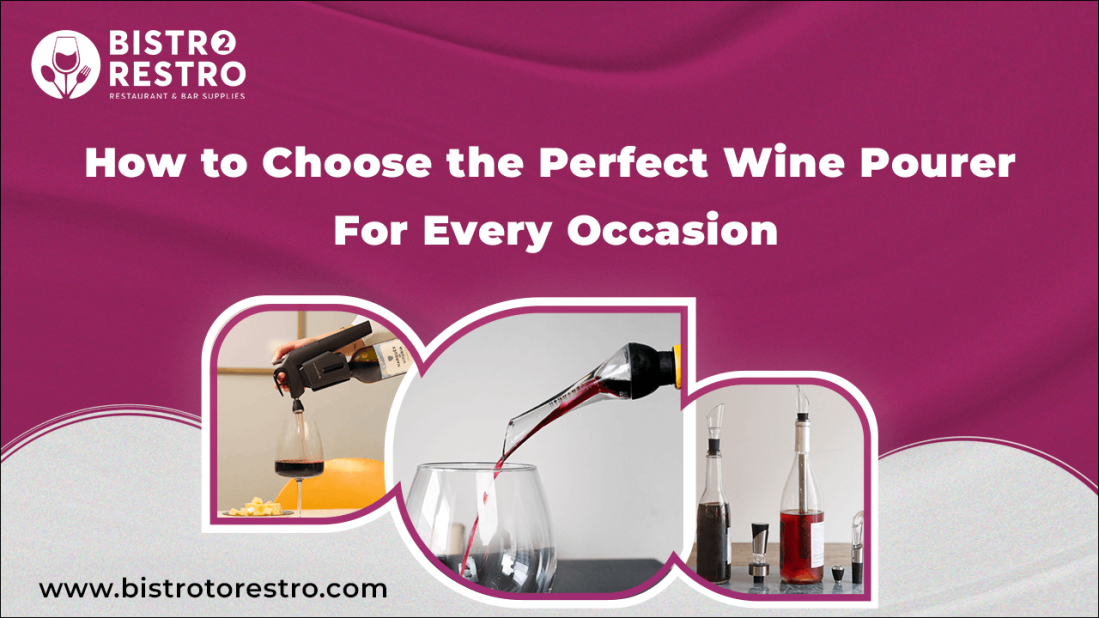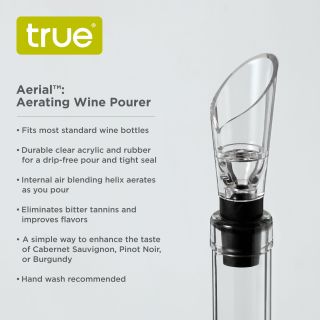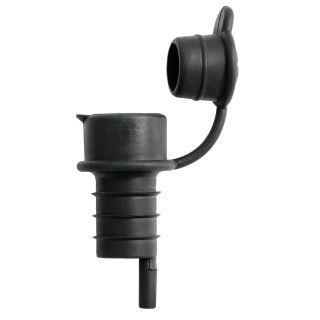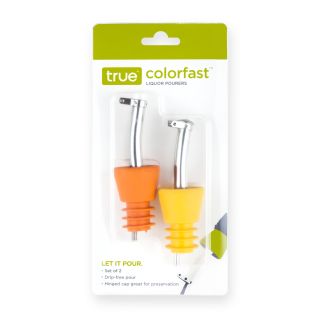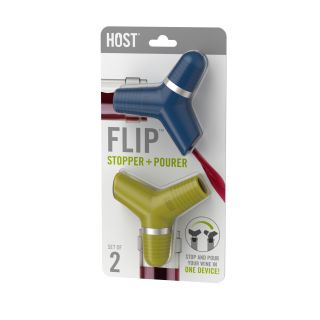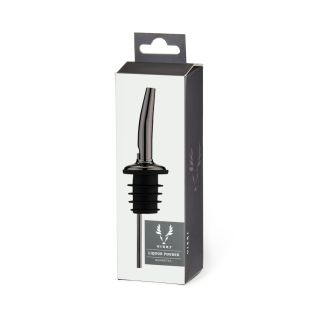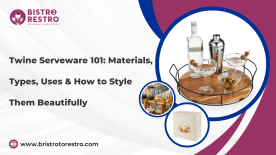Choosing the perfect wine pourer can elevate any occasion, from casual dinners to elegant celebrations. A good pourer does more than just dispense wine—it enhances the aroma, prevents spills, and adds a touch of sophistication to your serving style. With so many types available, from aerating pourers to vacuum-sealed stoppers, selecting the right one can feel overwhelming. Whether you're a seasoned wine enthusiast or a casual sipper, the right pourer makes all the difference in preserving flavor and presentation. In this guide, we’ll break down what to look for based on your event, wine type, and personal preferences, helping you find a wine pourer that fits seamlessly into your wine experience and makes every pour perfect.
Understanding the Importance of a Wine Pourer
A wine pourer might seem like a simple tool, but it plays a vital role in enhancing your overall wine experience. It’s not just about avoiding spills—it’s about elevating how you enjoy every bottle. Here’s why a wine pourer matters:
Drip Free Pouring: Prevents wine from dripping down the bottle and creating stains or messes.
Controlled Flow: Allows for a smoother, more precise pour, whether you're serving a tasting or measuring a wine pour oz for a full glass.
Built-in Aeration: Many models introduce oxygen into the wine as it’s poured, instantly enhancing flavor and aroma, especially for red wines.
Preservation: Some pourers double as stoppers or have airtight seals to help keep wine fresh after opening.
Elegant Presentation: Adds sophistication to any occasion, from dinner parties to solo nights in.
Minimized Waste: Reduces spills and over-pouring, making every bottle last longer.
All things considered, a wine pourer is a practical yet stylish addition to any wine enthusiast's collection.
Looking for the perfect wine pourer to match every occasion? At BistroToRestro, we bring you top-quality options from trusted brands like True, Viski, and Blush. Complete your wine setup with essential accessories such as aerating pourers, vacuum stoppers, and drip-free spouts – all designed to enhance every sip.
Key Factors to Consider When Choosing a Wine Pourer
Your wine experience can be greatly improved by choosing the appropriate wine pourer, but with so many variations available, it's crucial to take into account a few crucial elements to find the ideal fit. The following are the most crucial points to remember:
Material
Stainless Steel: Stain-resistant, long-lasting, and simple to clean. Perfect for people who want to live a long life.
Plastic: lightweight and frequently less expensive, but with time, it may lose its durability.
Silicone: Flexible and often spill-proof, but may not provide the same level of control in the pour.
Functionality
Aerating Pourers: Designed to introduce air into the wine as it’s poured, improving the flavor and aroma. Best for bold reds or wines that benefit from oxidation.
Non-Aerating Pourers: More basic but still effective in preventing spills and ensuring a clean pour.
Spill-Proof Design
Drip-Free Spouts: Ensure that no wine drips down the bottle neck, keeping your table clean.
Built-in Stoppers: Some pourers have stoppers that help prevent wine from dripping after pouring.
Ease of Use
Comfortable Grip: Choose a pourer that feels natural in your hand and fits securely onto your bottle.
Easy to Clean: A pourer that’s dishwasher safe or easy to rinse after use will make maintenance simpler.
Style and Aesthetics
Modern Designs: Sleek, minimalist pourers add a touch of sophistication to your wine service.
Classic Designs: More traditional styles can complement vintage glassware or a rustic setting.
Personalized Options: Some pourers can be engraved or customized, making them perfect as gifts or for special occasions.
By considering these factors, you can choose a wine pourer that enhances every occasion, from hosting guests to enjoying a typical wine pour at home.
Different Types of Wine Pourers and Their Features
When selecting a wine pourer, it’s important to consider the different types available, each designed to serve a specific purpose. The most common types of wine pourers and their unique features are as follows:
Wine Aerator Pourer:
Combines the function of a pourer and an aerator, allowing wine to breathe while pouring.
Designed to improve the tastes and scents of wines, particularly red wines.
Introduces air into the wine as it’s poured, instantly improving its taste.
Perfect for red wines that need exposure to oxygen to bring out their nuances.
Quick and effective, offering a decanting-like experience without the wait.
Chirpy Top Wine Pourer:
Unique ergonomic design for comfortable and controlled pouring.
Smooth, precise pour with minimal dripping.
Innovative top design makes it easy to handle.
Lightweight and practical, perfect for casual and professional use.
Adds a touch of fun and flair to your wine-drinking experience.
Wine Pourer Stopper:
The wine pourer stopper combines both a pourer and a stopper in one accessory.
It helps seal the bottle after pouring, preserving the freshness of the wine.
Conveniently, the all-in-one design eliminates away with the need for separate stoppers.
Many pourer stoppers feature a drip-free spout for clean and controlled pouring.
It's ideal for people who wish to prolong the life of wine, as well as those who drink it occasionally.
Simply attach the stopper after pouring to seal the bottle and keep the wine fresh.
Standard Wine Pourers
Ensure a smooth, controlled pour without spills, offering a simple and effective solution for everyday wine pouring.
It is easy to handle, fits the majority of common wine bottles, and is made of sturdy materials like silicone or stainless steel.
Ideal for casual use or those who prefer a basic pourer without added complexity for a normal wine pour.
Generally affordable and widely available, making them practical for daily wine drinkers.
No complicated mechanisms, just a straightforward way to pour wine cleanly.
Best for wine drinkers who want a no-fuss, efficient pour for everyday occasions.
Electric Wine Pourers:
Battery-operated or rechargeable, providing an effortless pour with just the press of a button.
Ideal for large gatherings, wine bar pour setups, or those with limited hand strength.
Provides smooth, continuous pouring with minimal effort.
Frequently includes extra features like spill avoidance or temperature control.
A great choice for modern, tech-savvy wine lovers or those who prefer convenience.
Best Wine Pourer:
High-quality construction, often stainless steel or glass.
Elegant and stylish, perfect for formal settings or gift-giving.
Offers a smooth, controlled pour with minimal spillage.
Designed for durability, ensuring long-lasting use.
Often fits most bottle types and is easy to use, making it ideal for wine enthusiasts and collectors.
When selecting the ideal wine pourer, take your needs and tastes into account since each variety has unique benefits.
Check out these essential wine accessories—from corkscrews to chillers that enhance your wine experience.
Choosing the Best Materials and Design for Your Wine Pourer
The design and material of a wine pourer are equally as crucial as its functionality. The right choice can improve your pouring experience, enhance the aesthetic of your wine service, and ensure the pourer lasts for years. Here’s what to consider:
Material Durability:
Stainless Steel: Known for its strength, rust resistance, and sleek look, ideal for frequent use.
Plastic or Acrylic: Lightweight, affordable, and durable, often used for basic models.
Silicone: Flexible, non-stick, and wear-resistant, perfect for leak prevention and better handling.
Glass: Elegant and refined, though more fragile than other materials.
Aesthetic Appeal:
Modern and Minimalist Designs: Stainless steel and acrylic pourers offer a clean, modern look.
Decorative Styles: Wooden, ceramic, or copper pourers add personality and style to your wine service, especially when paired with an elegant wine pouring glass.
Color Variations: Available in colors like matte black, silver, or gold to match your wine accessories.
Compact and Ergonomic: Designed to be visually appealing and comfortable for easy pouring.
Wine Preservation Features:
Airtight Seal: Many pourers act as stoppers, preserving wine freshness by preventing oxidation.
Silicone Seals: Flexible silicone ensures a tight, leak-proof seal, even when the bottle is stored sideways.
Easy to Use: Quick and simple to secure, these pourers offer convenience and preservation in one.
Size and Compatibility:
Standard Bottle Sizes: Most pourers are designed for 750ml bottles, but check for compatibility with larger bottles.
Universal Fit: Some pourers fit a wide range of bottle necks, while others are tailored for specific shapes.
Adaptable for Travel: Compact and portable, perfect for picnics or on-the-go wine lovers.
Portability:
Compact Design: A lot of wine pourers are made to be portable and lightweight for picnics or travel.
Storage Options: Some pourers come with protective cases or packaging for safe and easy storage on the go.
Travel-Friendly: Smaller, sturdy pourers make it easy to bring wine tools for outdoor events or vacations.
Temperature Control:
Insulated Models: Some pourers come with temperature control features to ensure wine is served at the ideal temperature.
Thermal Pourers: Thermal wine pourers help maintain the wine’s temperature as you pour, keeping it cool or at the perfect serving level.
Convenient Wine Tasting: Temperature-controlled pourers are especially useful for wine tastings or events where optimal wine flavor is essential.
How to Properly Maintain Your Wine Pourer
Maintaining your wine pourer properly is essential to keeping it in top shape. Here are some crucial pointers to maintain its best condition:
Clean After Each Use: Rinse the pourer with warm water immediately after use to prevent wine residues from building up.
Deep Clean Regularly: For a more thorough cleaning, use mild dish soap and avoid harsh chemicals or abrasive scrubbing tools. This will protect the material, especially if it's made of silicone or crystal.
Remove Stubborn Residue: If your pourer has aeration holes or intricate parts, soak it in a vinegar-water solution to remove any stubborn buildup or stains, particularly after using red wine.
Allow to Air Dry: After cleaning, always allow the pourer to air dry completely before storing it to avoid moisture accumulation that could lead to mold or mildew.
Inspect the Seal: If your pourer features a rubber gasket or stopper, check it regularly to ensure it still fits tightly. To keep a leak-free pour, replace it if it exhibits wear.
Store Properly: Keep your wine pourer in a dry, cool place. Avoid storing it in humid areas, such as near a dishwasher or sink, where moisture can cause deterioration over time.
Avoid Extreme Temperatures: Materials like silicone and plastic can distort or break when exposed to extreme heat or cold. Store your pourer in a place with a consistent room temperature to extend its life.
Check for Cracks or Wear: Regularly inspect your pourer for cracks or damage, and replace it promptly if any issues are found to prevent leaks and ensure optimal performance.
Check out how to maintain stemless wine glasses for lasting elegance to complement your pourer’s performance.
In conclusion, selecting the perfect wine pourer involves understanding your needs and choosing the right design, material, and features that enhance your wine-drinking experience. Whether you’re looking for something simple for everyday use or a more sophisticated aerating pourer for special occasions, there’s an option for every taste and setting. Proper maintenance will ensure longevity and consistent performance, making your pourer a reliable and valuable tool in your wine collection. Making an informed decision will improve your wine rituals and allow you to enjoy smooth, spill-free pours.
FAQs
How many pours in a bottle of wine?
A standard bottle of wine contains 750 ml, which typically gives about five 5-ounce pours. This may vary slightly based on the pour size.
How to pour wine without spilling?
To pour wine without spilling, hold the bottle at a 45-degree angle and control the flow by pouring slowly. After pouring, give the bottle a slight twist to prevent any drips from falling down the neck of the bottle.
How many ounces in a wine pour?
A standard wine pour is 5 ounces, which is the typical serving size for most wines. This allows space for swirling and enhances the tasting experience.
What is the etiquette for pouring wine?
When pouring wine, hold the bottle by the base, and always pour with the label facing the guest. Pour around 5 ounces per glass, and don’t fill past one-third to allow room for aeration.
